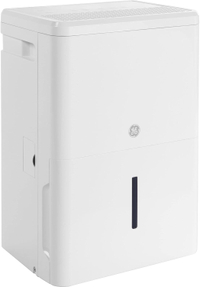The best dehumidifiers in 2024
The best dehumidifiers for every space
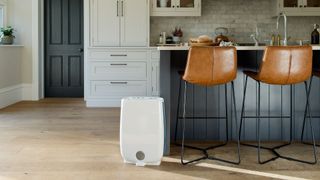
The best dehumidifiers are essential if you have excess humidity in your home, will help to reduce condensation and prevent mold. This is especially the case during colder months when we can't open up our windows for long periods to allow ventilation. In addition, dehumidifiers can help to get rid of odors and reducing dust and airborne allergens.
But with so many types of dehumidifier on the market, it can often be tricky to know which one is right for your needs. Luckily, we've spent countless hours in damp basements and humid rooms to find the best dehumidifier on the market — so you don't have to.
If you have a particularly large or humid room, you may benefit from our winning machine, the Honeywell 50 Pint dehumidifier. Not only did it perform well in all our tests, but comes with a higher capacity and a hose to make draining the water easier. And if you have several rooms, it may be worth buying a smaller, portable unit like the Midea 20 pint cube dehumidifier.
So, if you want to quickly tackle humidity in your home, here are the best dehumidifiers to suit every space, need and lifestyle.
The quick list
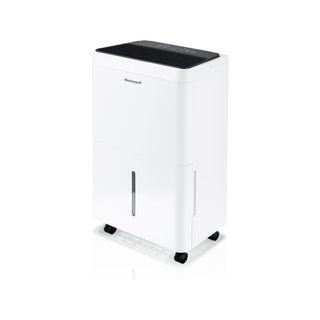
If you want a powerful machine for efficiently drying out damp spaces, such as the basement, this Honeywell 50 Pint is ideal. It comes with a 14-pint, water capacity, practical LED display, and quiet operation. A great overall dehumidifier that tackles any room.

For those who lack space, this compact dehumidifier is a great option. The Midea 20 pint cube dehumidifier has a 20-pint capacity but gets the job done. Operated via an app, you can monitor it from your phone, view humidity levels and receive alerts when the bucket is full.
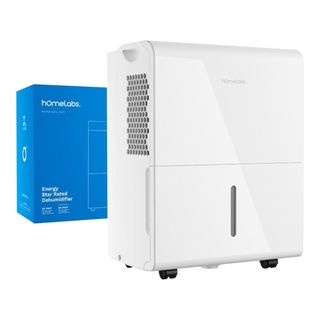
If you have smaller rooms, this 22 pint machine will handle your needs. The HomeLabs 22 Pint Dehumidifier is compact but performed well in all our tests. It's generally quiet and practical to move around your home.
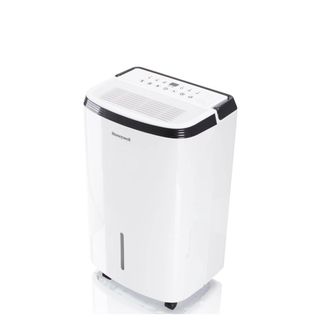
If you’re after longevity, you’ll need the best warranty. The Honeywell TP50AWKN is covered under a 5-year warranty— which is one of longest available. In our tests, it gave a strong performance, and was energy efficient. The only downside is that the small tank requires frequent emptying, however, you’re getting value for money.
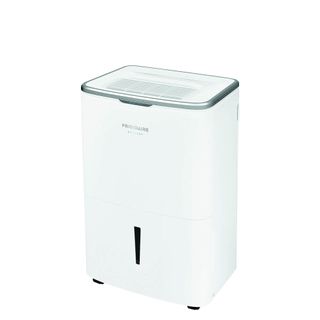
With smart connectivity, this dehumidifier from Frigidaire will fit into any smart home regime. You can operate it remotely via the app, set the target humidity and receive notifications when the bucket is full. And with a 50 pint capacity, it can hold plenty. Voice control is possible too via Amazon Alexa and Google Assistant.
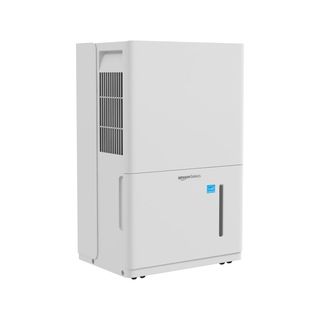
This basic yet mighty dehumidifier performed well in medium to large spaces. It comes with convenient features including humidity control. timer feature, auto-defrost function, and overflow protection. Despite its 35 pint capacity, it can hold plenty. While it doesn't have App control, it certainly gets the job well done.
The best dehumidifiers you can buy today
Why you can trust Tom's Guide
Best overall
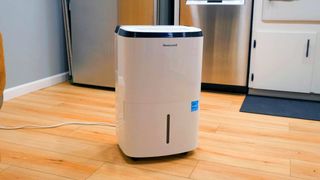
Specifications
Reasons to buy
Reasons to avoid
If you have predominantly humid spaces, such as basements, this Honeywell 50 pint dehumidifier stood up to our tests. After setting up in my basement bathroom, it performed impressively, only taking less than an hour reduce levels of humidity down to the 35%. I noticed that it also worked efficiently for mid-sized spaces, such as the living room, kitchen and laundry room.
While it can handle 50 pints a day, the 14-pint water capacity does mean you'll be emptying that tank frequently. However, you can use the included hose to drain automatically and continuously. Once connected to its app, it's straightforward to operate and you can even set up multiple devices to run at the same time by using AI-enabled speakers.
In addition, I was impressed by its quiet operation and stylish, modern design makes an attractive feature in any room. An impressive and powerful dehumidifier that can efficiently handle every room size.
Read our full Honeywell 50 Pint Dehumidifier review.
Best budget
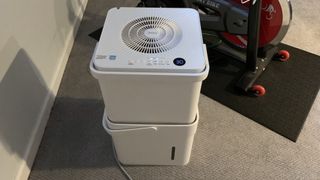
Specifications
Reasons to buy
Reasons to avoid
I loved testing the Midea 20 smart dehumidifier. Once connected to its app, you can monitor it from your phone, including viewing the humidity levels and receiving alerts when the bucket is full. I can change the settings remotely too, adjusting the speed of the fan with three levels to choose from.
Voice control is available via Alexa or Google Assistant, although two-factor authentication is missing. It stands out for storage though, as this dehumidifier can be ‘nested’ into itself, taking up half of the space.
In terms of performance, it gets the job done and proved to be a useful asset for us when dealing with a flooded basement. It’s also incredibly easy to empty, thanks to the lower half turning into a bucket and handle.
Despite the name, it can hold about 24 pints, although this is still relatively small compared to others on our list. Ultimately, this dehumidifier has a very user-friendly design which couldn't be more compact to store.
And don't take just my word for it! Amazon reviews mentioned good performance and ease of setup. For instance, it's easy to connect to WiFi, runs well and does a good job. However, there are mixed opinions on ease of cleaning, noise, and appearance.
Read our full Midea 20 pint cube dehumidifier review.
Best for small spaces
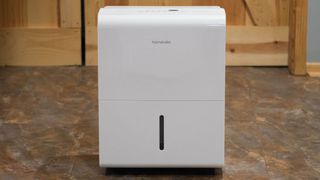
Specifications
Reasons to buy
Reasons to avoid
The HomeLabs 22 Pint Dehumidifier, which replaces the 30-pint model, has a 1,400 Sq Ft coverage. This makes it a great choice for small spaces including apartments, basements and other spaces. It's sleek and minimal, which is ideal to place in a room without taking up a lot of space.
This model did well in real-world tests for managing humidity levels in the bathroom, laundry room, and storage space with the doors open. It did particularly well in my basement bathroom, measuring approximately 100 square feet.
When the temperature reached up to 79% humidity, it had taken about an hour for the levels to reach the target of 35%. The unit used about 235 watts while running, and used about .20 kWh. However, it seemed to struggle with handling humidity in larger spaces or exceeding 900 square feet, with a longer run time of four hours. In any case, my test results were far more accurate in smaller spaces, and it works well in less time.
Generally, the Homelabs 22 dehumidifier is easy to set up and use, with a quiet operation, around 55 decibels. Since it has a smaller tank, it does tend to fill up quickly if the room is very humid. Although, this also means that you’ll need to empty it more frequently.
Read the full HomeLabs 22 Pint Dehumidifier review.
Best warranty
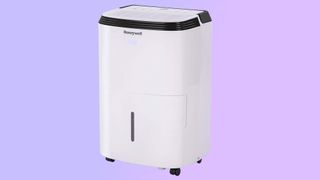
4. Honeywell TP50AWKN
Specifications
Reasons to buy
Reasons to avoid
The Honeywell TP50AWKN, which replaces the virtually identical Honeywell TP50WK but adds Wi-Fi connectivity, is well regarded by professionals and customers alike.
If something does go wrong with the TP50AWKN, you're covered under Honeywell's five-year warranty. Most of the dehumidifiers we considered come with one-year or two-year warranties, so this extended policy ensures that your investment is protected.
One downside: The Honeywell TP50AWKN's water bucket holds just 7 pints (three-quarters of a gallon), a small fraction of what the machine can condense in a day. If you don't have the option to continuously drain, you'll find yourself emptying the water bucket more frequently with the Honeywell TP50AWKN or going without dehumidification once the tank reaches capacity.
Customers posted on Amazon liked the ease of use, and say it's easy to set up. However, opinions are mixed on durability, moisture sensor, performance, and noise.
Best smart controls
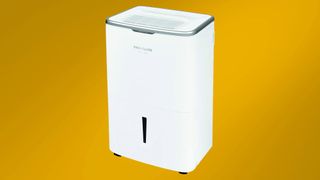
5. Frigidaire FGAC5044W1
Specifications
Reasons to buy
Reasons to avoid
You probably don't need a Wi-Fi-enabled dehumidifier, but if smart-home devices are your jam, then the 50-pint Frigidaire FGAC5044W1 may deliver on what you're looking for.
You'll receive push notifications when the water bucket is full, and you'll be able to remotely control the fan speed, target humidity and power. You can also set up voice controls for the Frigidaire FGAC5044W1 with Amazon Alexa and Google Assistant.
All these smart features can be especially handy if you're out of town or you're monitoring a dehumidifier in a rental property. However, many online purchasers of the unit reported trouble setting up the app, which gets mostly negative reviews on both Google Play and the App Store. Here's hoping Frigidaire gets that sorted out.
This dehumidifier is fairly similar to our top pick, the Frigidaire FFAP5033W1, but swaps Wi-Fi for a powered water pump. A drain hose comes with the unit to let the tank drain passively, or you can dump out the 2-gallon bucket by hand.
There's also a washable dust filter and an ionizer to eliminate airborne particles.. A light at the top of the front face changes color to let you know system status.
Hundreds of Amazon, Wayfair and Walmart customer reviewers liked the Frigidaire FGAC5044W1 a lot (even if many of them didn't like its mobile app), rating the unit at 4.4 out of 5 stars on average.
Amazon reviews stated customers liked the performance, ease of use, and humidity of the dehumidifier. They also mention it does a great job of pulling humidity out of the air and that the wheels work well on cement floors. However, opinions are mixed on noise, value, and capacity.
(Note: This replaces an older model, the Frigidaire FGAC7044U1, which has been discontinued.)
Best for large spaces
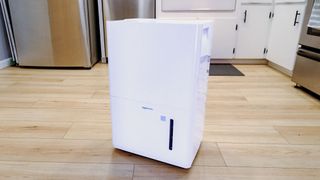
Specifications
Reasons to buy
Reasons to avoid
The Amazon Basics 35-Pint dehumidifier may have a basic spec, but I was impressed by its grand job in removing humidity levels fast. In tests, I was particularly impressed by its quality performance in mid-large sized rooms, with high levels of damp.
I found that it worked quickly and efficiently to control humidity in spaces up to which measures about 900 square feet. However, it was overkill for any space under 600 feet or so, and threw out a lot of heat. With that being said, this model probably isn't best suited for smaller spaces.
Despite having a 35-pint capacity, it is quite large and heavy to lift. Luckily, the unit is mounted on casters, which makes it easy to move around on the floor. Its six-liter bucket also slides out easily from the front of the unit and includes a handle to make it easy to empty.
It doesn't come with an App, but the buttons on the top of the unit allow you to power it on, make the adjustments you’ll need and are straightforward to use.
Another downside is it was the noisiest of the all the models I'd tested, however, this wasn't a real deal-breaker. The most important factor was that it performed consistently well, and was able to remove humidity in large, damp spaces.
Read the full Amazon Basics 35-Pint Dehumidifier review.
Also tested
We tested a wide selection of dehumidifiers at Tom's Guide, and despite doing a decent job, not all of them made it to our final cut. In case you still can't find a suitable one for your needs, you may want to check out these below.
GE Energy Smart 35 Pint Dehumidifier: now $186 @ Amazon
This 35 pint dehumidifier works quickly in small spaces, and gives a decent performance. However, it lacks advanced features including App control, and was noisier than the other models we tested. A good buy if you simply want a basic spec to get the job done.
Read our full GE 35 Pint Dehumidifier review.
Comparison chart
| Row 0 - Cell 0 | Floor area (Square Foot coverage) | List price | Capacity (pints) | Drainage type | Digital controls |
| Honeywell 50 pint | 4,000 Sq. Ft | $300 | 50 | Pump | Yes |
| Midea 20 pint cube | 1,500 Sq. Ft | $178 | 20 | Passive | Yes |
| HomeLabs 22 pint | 1,400 Sq Ft | $219 | 22 | Passive | Yes |
| Honeywell TP50AWKN | 4,000 Sq. Ft | $419 | 30 | Passive | Yes |
| Frigidaire FGAC5044W1 | 4,500 Sq Ft. | $379 | 50 | Passive | Yes |
| Amazon Basics 35 pint | 2,500 Sq Ft. | $179 | 35 | Passive | Yes |
How we tested
Our testers

Dan is the former technical editor for VeloNews Magazine, who currently reviews electric bikes, bike lights, and other bike accessories for Tom's Guide. In addition to VeloNews, his work has appeared in Triathlete Magazine, Rouleur Magazine, CyclingTips.com, Road Bike Action, Mountain Bike Action, CycleVolta.com, Tomsguide.com, and much more. Dan also hosts two podcasts on his site, Slow Guy on the Fast Ride: One is about cycling and other outdoor activities, while the other looks at mental health issues. Most recently, Dan also covered the 2022 Tour de France. Dan lives outside of Denver, Colorado with his family.
Emily Long is a Utah-based freelance writer who covers consumer technology, privacy and personal finance for Tom's Guide. She has been reporting and writing for nearly 10 years, and her work has appeared in Wirecutter, Lifehacker, NBC BETTER and CN Traveler, among others. When she's not working, you can find her trail running, teaching and practicing yoga, or studying for grad school — all fueled by coffee, obviously.




First, we researched the top picks that are currently on the market to determine the best dehumidifiers on the market. This included top-selling and highly reviewed machines on popular retailers like Amazon, Best Buy and The Home Depot.
The chosen selection of dehumidifiers were then subjected to hands-on, extensive testing in the same environment. Our reviewer spent weeks testing these dehumidifiers in damp environments like their basement, kitchen and other areas that were prone to high levels of humidity.
To evaluate how well the dehumidifier works for every situation and space, we looked at the following things:
Set up and ease of use:
We looked at how easy it was to set up the dehumidifier in your space. How heavy is it move around? How many pints does it have? And does it have useful features such as wheels or a carry handle at the top for better portability? We even looked at the length of the power cable and whether it would be convenient for many households.
Also, we considered how easy it was to maintain the dehumidifier and to empty out the water bucket. And if the model had an included drain hose or built-in pumps, we looked at how efficient it was when draining moisture into sinks. In addition, how easy is it to clean afterwards and replace the filter.
Design and features:
We analyzed the overall design and whether its size was suitable for the space. We also looked at notable features such as LCD display , touch screen controls or remote control. We looked at whether it had settings like an auto-off feature, timer, frost control sensor, and auto-restart, and evaluated smart/app capabilities such as voice control. What's more, we noted if the app was easy to use and intuitive, and if there were any pairing issues.
Performance and efficiency:
As part of our testing, our reviewer ran the hot shower/faucet for about five minutes in the bathroom, kitchen and basement to get the room up to 90% humidity. Once the dehumidifier was turned on, it was left to run for under 12 hours each day over a few weeks.
We then timed how long it took for the dehumidifier to reduce humidity to the level set and total runtime for the day. For instance, the Honeywell 50 Pint dehumidifier (and our winner!) took less than an hour to reach 35% level - which was the fastest out of all the models. We also recorded the daily average and total runtime for over a week. For accurate readings, we matched the humidity of our space with Alexa’s air quality monitor.
In addition, we monitored how many watts of power the dehumidifier used while it was running with the fan on high, and with the fan turned off. This helped us to determine total consumption and how energy-efficient the dehumidifier was. Other issues noted were discrepancies between the built-in humidistat readings and separate Alexa air quality monitor levels, any leakage issues, aswell as noise levels.
How to buy the best dehumidifier
There are a huge range of dehumidifiers on the market. Before choosing your favorite, here are a few factors you should consider:
Type
There are different types of dehumidifiers on the market. The most common type is a condensing dehumidifier, which pulls the absorbed air over refrigerated coils, which cools it enough the condense and separate the moisture.
Other types include desiccant dehumidifiers, which will use a water-absorbing material, and thermoelectric dehumidifiers, which operate with charged plates. Generally speaking, neither of these latter two types are as effective as condenser models, which is why we only recommend this type in our list.
Capacity
Dehumidifiers generally come in three sizes: large (45-50-pint capacity), medium (30-pint capacity) and small (20-22-pint capacity).
Under the old regulations, these sizes were 70, 50 and 30 pints, respectively, and you'll see such numbers with three older models above.
Noise level
If you’ll be placing a dehumidifier in a quiet room, such as a bedroom or home office, where you need to fall asleep or concentrate without being disturbed, consider the noise level of the dehumidifier before you buy. Aim for a dehumidifier with a decibel level of around 50 decibels or below, anything above this level will be louder.
Features to look out for
Pint capacity — The capacity in pints relates to how much moisture the dehumidifier claims to absorb per day. The bigger the capacity, the larger and damper space it can handle.
Bucket size — Pint capacity shouldn’t be confused with bucket size however. This specification indicates how much the internal bucket can actually hold before it will need to be emptied. The larger the bucket, the less often you will need to empty it.
Drainage type — On this list you will find passive and pump drainage types. Passive types let you passively drain the water through a hose, or alternatively you can manually carry and empty the bucket yourself. Whereas pump drainage types will automatically pump the water out. Pumps are preferred as the water doesn’t need to rely on gravity alone to drain, so you can direct the hose into a sink or out of the window. However, these models do cost more than without.
Energy Star Certification — It’s always useful to look out for Energy Star Certification as this guarantees savings in terms of energy and money.
Humidity sensor — With a humidity sensor, your dehumidifier will detect relevant changes in the atmosphere and can automatically switch on and, in some cases, set its power accordingly. Those without a sensor will just be manually controlled.
Frost sensor — A frost sensor will detect the formation of ice on the condenser coils. The dehumidifier will then shut off the compressor to give the ice a chance to melt. If it continues to run with frost on the coils, this can damage the parts and make the appliance work much harder to absorb any moisture.
Auto restart — If the dehumidifier suddenly loses power, auto restart means it will automatically switch back on to its previous settings once power is restored.
Number of speeds — This relates to how many speeds the fan has on the dehumidifier. The more speeds there are, the better as it gives you greater control and means excess energy isn’t wasted.
If you're still unsure, check out these things you should know before buying a dehumidifier and 5 reasons your home needs a dehumidifier this summer. As long as your avoid these 7 common dehumidifier mistakes.
Where is the best place to put a dehumidifier?
Ideally, a dehumidifier should be placed in the centre of a room to work efficiently. This allows the air to circulate properly around the unit.
Generally, a dehumidifier can dry out a room between 24 and 72 hours. But this depends on whether the room is large or has high humidity levels, which would take up to weeks to dry out.
For more top tips, check out our guide for where's the best place to put a dehumidifier.
How to clean a dehumidifier
When you consider that bacteria and mold is being sucked into your humidifier, it’s no wonder that it needs an occasional clean. Knowing how to clean a dehumidifier isn’t as difficult as you might think, simply follow these steps if none are given in your manual:
1. Unplug the humidifier from the wall. You don’t want to risk an electric shock!
2. Remove the water reservoir bucket and tip out any residual water. Clean this with warm soapy water and a microfiber cloth.
3. While that’s drying, wash the filters. The filters collect any impurities so it’s essential that these get an occasional clean. You should have a main filter and potentially a much smaller bucket filter. If you’re not sure where to find these you can refer to your manual. Both need to be washed in warm soapy water, rinsed and then left to dry.
4. If you notice a lot of dust inside your machine, you can also use a vacuum cleaner with a brush attachment to pick up any remaining fluff.
5. Lastly, give the outside a once over with a microfiber cloth for finishing touches.
Sign up now to get the best Black Friday deals!
Discover the hottest deals, best product picks and the latest tech news from our experts at Tom’s Guide.

As the Homes Content Editor, Cynthia Lawrence covers all things homes, interior decorating, and garden-related. She has a wealth of editorial experience testing the latest, ‘must-have’ home appliances, writing buying guides and the handy ‘how to’ features.
Her work has been published in various titles including, T3, Top Ten Reviews, Ideal Home, Real Homes, Livingetc. and House Beautiful, amongst many.
With a rather unhealthy obsession for all things homes and interiors, she also has an interior design blog for style inspiration and savvy storage solutions (get rid of that clutter!). When she’s not testing cool products, she’ll be searching online for more decor ideas to spruce up her family home or looking for a great bargain!
